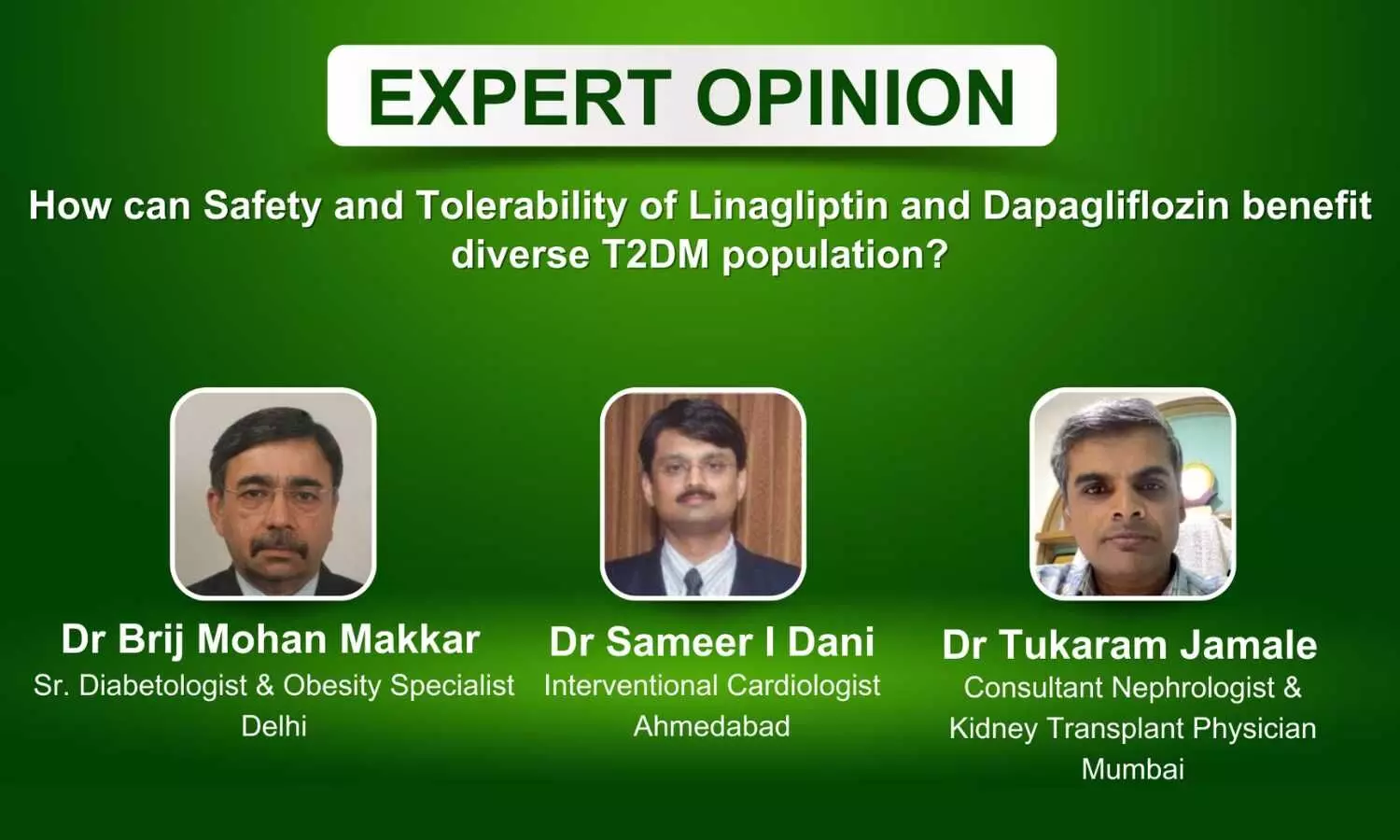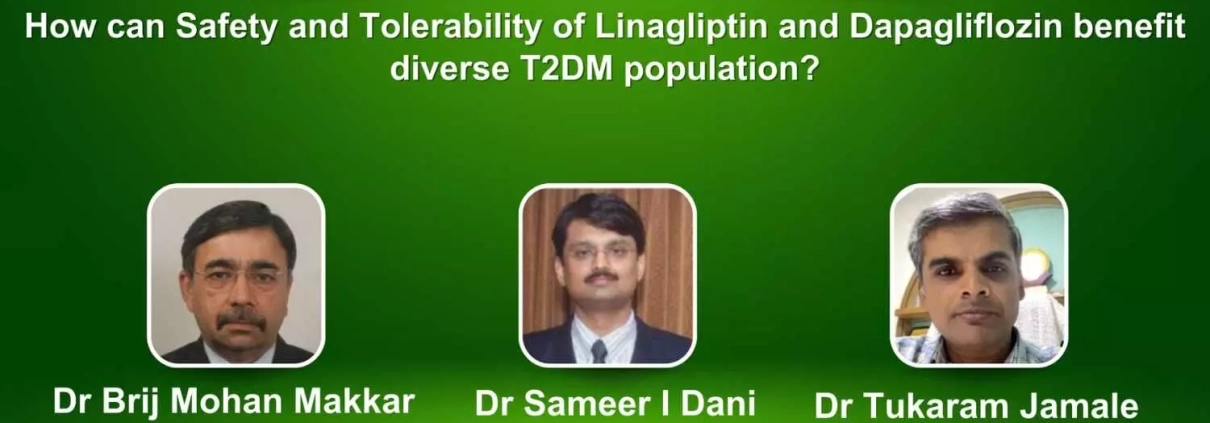Evergreen Talk Series: How can Safety and Tolerability of Linagliptin and Dapagliflozin benefit diverse T2DM population?

Presenting the Evergreen Talk Series featuring Dr. Brij Mohan Makkar, a Senior Diabetologist and Obesity Specialist from Delhi, Dr Sameer I. Dani, an Interventional Cardiologist from Ahmedabad, and Dr. Tukaram Jamale, a Nephrologist and Kidney Transplant Physician who serves as the Head of the Department at KEM Hospital Mumbai. They provide their insights on the use of Linagliptin, Dapagliflozin, and Metformin for diabetic patients.
Bringing viewpoints from the different specialities of Diabetology, Cardiology and Nephrology, they share their views about How can Safety and Tolerability of Linagliptin and Dapagliflozin benefit diverse T2DM population.
Dr Brij Mohan Makkar: The major issue that troubles people is the
increased risk of genito UTI infections, which can largely be taken care of by
maintaining good hygiene. If somebody gets a genito UTI, it can be treated
easily, and if somebody is experiencing recurrent genito UTIs, you can
discontinue this medication. Otherwise, largely they are very safe molecules
and have been shown to be safe even in people who have CKD or advanced liver
disease, elderly, and so on. As far as safety is concerned, I don’t think there
is a major concern, another important thing is when you are combining
a gliptin and SGLT2i, studies have shown that the risk of genito UTI further
goes down. So, it is kind of again a beneficial effect when you are combining
these two molecules to provide not only synergy but also cut down the side
effects.
Dr Sameer I Dani: Dapagliflozin
safety signals are there with extensive evidence. Dapagliflozin produces
cardiovascular benefits in terms of improved function but also includes
mortality or survival benefits in patients with HF. Linagliptin, out of all
DPP4 inhibitors, all gliptins, I think Linagliptin has maximum safety evidence
for renal outcomes. Linagliptin also has clear CV neutrality, in that sense
that it does not show any concerns as far as cardiovascular safety is
concerned, for instance, we are not there, so
that way I think combination works out very well in terms of their evidence as
far as safety is concerned.
Dr Tukaram Jamale: When
practically using these agents individually, they are very safe. When combining
them, it is better to proceed step by step and monitor how therapy is tolerated
by the patient and if any untoward effects are encountered. Most of the time,
you will be able to introduce all of these evidence-based therapies, but then
one has to be careful in monitoring them serially. Subsequently, if they are
introduced, they can be put to the best use.


